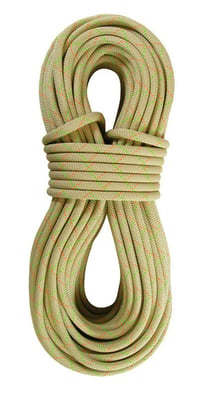Q&A: 11mm Rope and NFPA Requirements
 READER QUESTION:
READER QUESTION:
We’re hearing more about 11mm rope for rescue purposes – does this meet NFPA requirements?
ROCO TECH PANEL ANSWER:
That is a question we are getting quite often these days. The move from the traditional half-inch rescue rope (12.5mm) to 11mm is rapidly gaining momentum in the urban and industrial rescue world. While it is nothing new to rope access practitioners and back country rescuers, the skinny ropes can seem like a big jump for organizations doing their best to navigate the NFPA world.
At the end of 2017, the National Fire Protection Association released NFPA 1858, The Standard on Selection, Care, and Maintenance of Life Safety Rope and Equipment for Emergency Services. For the first time, NFPA had an equipment guidance document focused on the end user rather than the manufacturer of rescue equipment.
Most recently, this standard along with two other standards (1670 and 1983) have been consolidated into one comprehensive standard, NFPA 2500: Standard for Operations and Training for Technical Search and Rescue Incidents and Life Safety Rope and Equipment for Emergency Services, which became effective September 15, 2021.
 A quick look at NFPA 2500 reveals that the end user has significant leeway to determine rope and equipment size and strength. For example, Chapter 30 Selection (NFPA 1858), states in Section 2 Life Safety Rope that:
A quick look at NFPA 2500 reveals that the end user has significant leeway to determine rope and equipment size and strength. For example, Chapter 30 Selection (NFPA 1858), states in Section 2 Life Safety Rope that:
“Specific performance criteria or specific features shall be defined based upon the intended application of the rope and equipment being purchased. If the organization has multiple intended applications for life safety rope, the purchase of multiple ropes shall be considered that best fit those applications.” (30.2.1)
Section 2 goes on to state, “Organizations shall specify and select rope with a minimum breaking strength (MBS) to provide an adequate factor of safety, as defined by the AHJ, for the intended application(s) to ensure adequate strength.” (30.2.5)
The standard then adds, “Rope diameter shall be considered with prioritization to ensure compatibility with the other components used in the system and the ability to grip the rope.” (30.2.6)
NFPA allows the Authority Having Jurisdiction (AHJ) wide latitude to choose 11mm rope and equipment should it meet the needs of your organization. If you need further convincing, the Annex tells us that; Chapters 24 through 28 (of NFPA 2500), which divide life safety rope and equipment into two designations: general use and technical use. NFPA does not establish or endorse a particular safety factor or ratio.
And then goes on to say, “Rescue organizations can elect to use either technical use– or general use–labeled equipment based on the anticipated loads of the incident; training/skill level of responders; and the AHJ’s established acceptable safety factors. What safety factor(s) is deemed appropriate might vary based on the acceptable level of risk, severity of consequences of a potential failure, types of technical rescues, and the corresponding level of operational capability of the organization.” (A.30.1.2.1(6))
Most major rope manufacturers now offer 11mm kernmantle rescue ropes that are rated for NFPA general use. Add in compatible hardware like the excellent 11mm CMC Clutch by Harken or the Petzl Maestro Small, and you have multiple choices for skinny rope technical rescue that rivals the strength of any half-inch system with a much easier carry burden.
At the end of the day, whatever size rope and equipment you choose to use, it should;
- meet a given standard (NFPA, ANSI, EN, CE)
- be used within manufacturer’s recommendations
- allow your team to complete the required task safely
This 11mm rope feels lighter, faster and rope companies are making it stronger, but is it right for you? Only you or your AHJ can decide.




